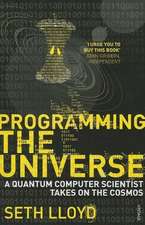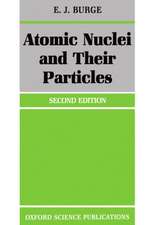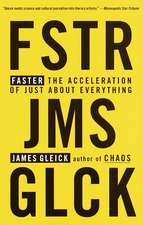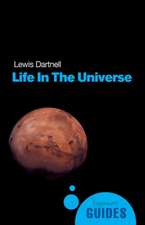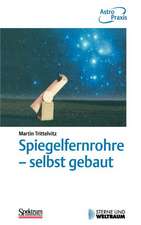The Impact of HST on European Astronomy: Astrophysics and Space Science Proceedings
Editat de F. Duccio Macchettoen Limba Engleză Paperback – 5 mai 2012
| Toate formatele și edițiile | Preț | Express |
|---|---|---|
| Paperback (1) | 1218.69 lei 6-8 săpt. | |
| SPRINGER NETHERLANDS – 5 mai 2012 | 1218.69 lei 6-8 săpt. | |
| Hardback (1) | 1224.85 lei 6-8 săpt. | |
| SPRINGER NETHERLANDS – 5 feb 2010 | 1224.85 lei 6-8 săpt. |
Din seria Astrophysics and Space Science Proceedings
- 24%
 Preț: 1041.90 lei
Preț: 1041.90 lei - 18%
 Preț: 1837.57 lei
Preț: 1837.57 lei - 18%
 Preț: 1211.74 lei
Preț: 1211.74 lei - 18%
 Preț: 2108.27 lei
Preț: 2108.27 lei - 18%
 Preț: 1211.11 lei
Preț: 1211.11 lei - 18%
 Preț: 1241.42 lei
Preț: 1241.42 lei - 18%
 Preț: 1216.48 lei
Preț: 1216.48 lei - 18%
 Preț: 2482.38 lei
Preț: 2482.38 lei - 18%
 Preț: 943.88 lei
Preț: 943.88 lei - 18%
 Preț: 1232.26 lei
Preț: 1232.26 lei - 18%
 Preț: 1834.10 lei
Preț: 1834.10 lei - 24%
 Preț: 1033.36 lei
Preț: 1033.36 lei - 18%
 Preț: 1228.29 lei
Preț: 1228.29 lei - 18%
 Preț: 944.19 lei
Preț: 944.19 lei - 24%
 Preț: 1043.61 lei
Preț: 1043.61 lei - 18%
 Preț: 943.25 lei
Preț: 943.25 lei - 18%
 Preț: 1237.80 lei
Preț: 1237.80 lei - 18%
 Preț: 1227.99 lei
Preț: 1227.99 lei - 18%
 Preț: 1375.28 lei
Preț: 1375.28 lei - 18%
 Preț: 1834.58 lei
Preț: 1834.58 lei - 18%
 Preț: 1222.62 lei
Preț: 1222.62 lei - 18%
 Preț: 1239.19 lei
Preț: 1239.19 lei - 18%
 Preț: 952.72 lei
Preț: 952.72 lei - 18%
 Preț: 1825.92 lei
Preț: 1825.92 lei - 18%
 Preț: 1825.27 lei
Preț: 1825.27 lei - 18%
 Preț: 1822.57 lei
Preț: 1822.57 lei - 18%
 Preț: 942.44 lei
Preț: 942.44 lei - 18%
 Preț: 955.25 lei
Preț: 955.25 lei
Preț: 1218.69 lei
Preț vechi: 1486.21 lei
-18% Nou
Puncte Express: 1828
Preț estimativ în valută:
233.26€ • 240.38$ • 196.93£
233.26€ • 240.38$ • 196.93£
Carte tipărită la comandă
Livrare economică 03-17 martie
Preluare comenzi: 021 569.72.76
Specificații
ISBN-13: 9789400731615
ISBN-10: 9400731612
Pagini: 336
Ilustrații: XXIV, 312 p.
Dimensiuni: 155 x 235 x 18 mm
Greutate: 0.47 kg
Ediția:2010
Editura: SPRINGER NETHERLANDS
Colecția Springer
Seria Astrophysics and Space Science Proceedings
Locul publicării:Dordrecht, Netherlands
ISBN-10: 9400731612
Pagini: 336
Ilustrații: XXIV, 312 p.
Dimensiuni: 155 x 235 x 18 mm
Greutate: 0.47 kg
Ediția:2010
Editura: SPRINGER NETHERLANDS
Colecția Springer
Seria Astrophysics and Space Science Proceedings
Locul publicării:Dordrecht, Netherlands
Public țintă
ResearchCuprins
Stars, star formation, stellar populations and planets.- Hot Massive Stars: The Impact of HST.- HST Spectroscopy of the Hottest White Dwarfs.- Key Abundance Tracers in the UV: From the Lightest to the Heaviest.- UV Spectroscopy of Metal-Poor Massive Stars in the Small Magellanic Cloud.- Star Formation Histories of Resolved Galaxies.- HST’s View of the Youngest Massive Stars in the Magellanic Clouds.- Planetary Nebulae and Their Central Stars in the Magellanic Clouds.- A Look at Neutron Stars with HST: From Positions to Physics.- The HST Contribution to Neutron Star Astronomy.- Exotic Populations in Galactic Globular Clusters.- The Stellar Mass Function in Globular Clusters.- Early Phases of Protoplanetary Disk Evolution.- Unveiling the Role of Jets in Star Formation.- A View of Star Forming Regions in the Magellanic Clouds.- A Preliminary Budget for the Ionizing Photons in HII Regions of M51.- Nearby galaxies, bulges, spheroids and galaxy formation.- New HST Views at Old Stellar Systems.- Young Massive Star Clusters in the Era of the Hubble Space Telescope.- The Central Regions of Early-Type Galaxies.- Nuclear Star Clusters Across the Hubble Sequence.- Stellar Populations in the Outskirts of M31: The View from HST.- Variable Stars in “Nearby” Galaxies with HST.- Extremely Metal-Poor Star-Forming Dwarf Galaxies.- Resolved Stellar Populations in Nearby Galaxy Halos.- The Kinematics of Core and Cusp Galaxies: Comparing HST Imaging and Integral-Field Observations.- Resolving Extragalactic Star Clusters with HST/ACS.- Tracing Galaxy Evolution in Clusters and Groups at ?1.- The Dawn of Galaxies.- A Simple Physical Model for Young Galaxies in the Early Universe.- Diffuse Ionized Gas Halos Seen with HST.- Deep fields, AGN, black holes and radiogalaxies.- The Host Galaxy Properties of Powerful Radio Sources Across Cosmic Time.- A New View of the Origin of the Radio-Quiet/Radio-Loud AGN Dichotomy?.- The Bright and the Dark Side of Malin 1.- Cluster Lensing with Hubble.- HST Observations of Gravitationally Lensed QSOs.- Study of Quasar Host Galaxies Combining HST/ACS Images and VLT Spectra.- Local Lyman Emitters and Their Relevance to High Redshift Ones.- The HST View of Low Luminosity AGN.- The Black Hole Masses in Galactic Nuclei.- The HST/ACS Coma Cluster Treasury Survey.- Discovery of a Population of Evolved and Massive Galaxies at High Redshift.- Searching for High Redshift Galaxies Using Population Synthesis Models.- The ACS Grism Mode and ACS Grism Observations of Deep Fields and High Ly- Galaxies.- The Role of in the Study of Near- and Mid-infrared-selected Galaxies.- Large Scale Structure and Galaxy Evolution in COSMOS.- Mass Estimations of Supermassive Black Holes in Brightest Cluster Galaxies.- Near-UV Study of Active Galactic Nuclei with Advanced Camera for Surveys.- A Quantitative Analysis of the Morphology of Star Formation in a Sample of GOODS-HST/ACS Galaxies.- HST, H0 and dark energy.- Visiting Hubble in Orbit.- HST and JWST: Present and Future.- Enabling Science with the Hubble Legacy Archive.- Advanced Calibration Using Physical Instrument Models: HST, VLT and Beyond.- The Hubble Constant and HST.- Recent Progress on the Cepheid Distance Scale with.- Seeing Dark Energy.- Closing remarks.- Closing Remarks.
Textul de pe ultima copertă
The Hubble Space Telescope has facilitated major contributions to a wide range of topics in astronomy:
- The study of nearby planets
- The processes of star and planet formation
- The stellar and interstellar components of galaxies
- The discovery that most, if not all, galactic nuclei harbor a massive black hole that profoundly affects their evolution
- The realisation that the universe as a whole is undergoing acceleration as a result of a yet unknown form of "dark energy".
Caracteristici
Offers a broad perspective of the advancements made possible by the HST over its almost two decades of operation Emphasizes the impact of the HST advancements on European astronomical research With a Foreword by Malcolm Longair Includes supplementary material: sn.pub/extras

